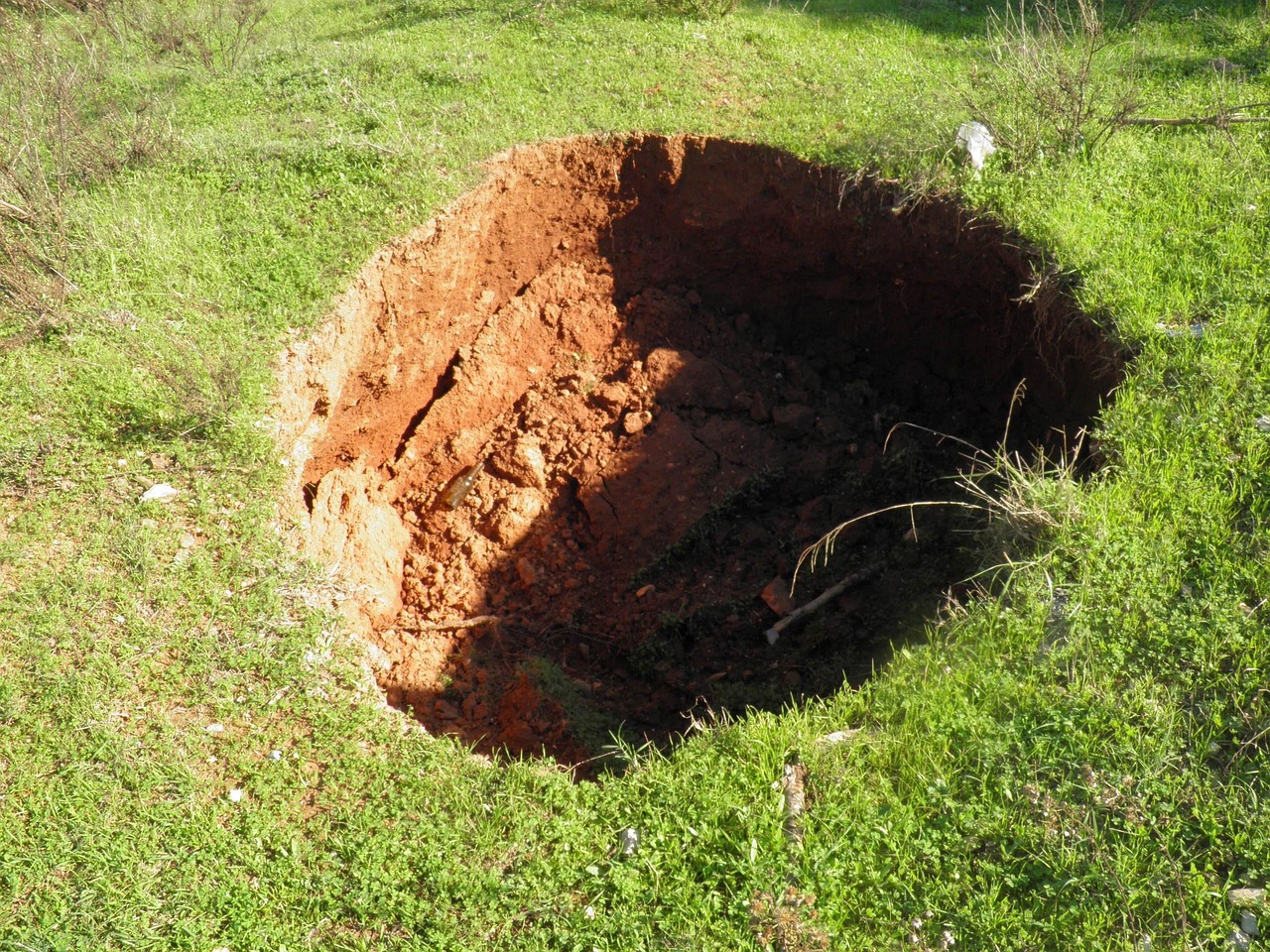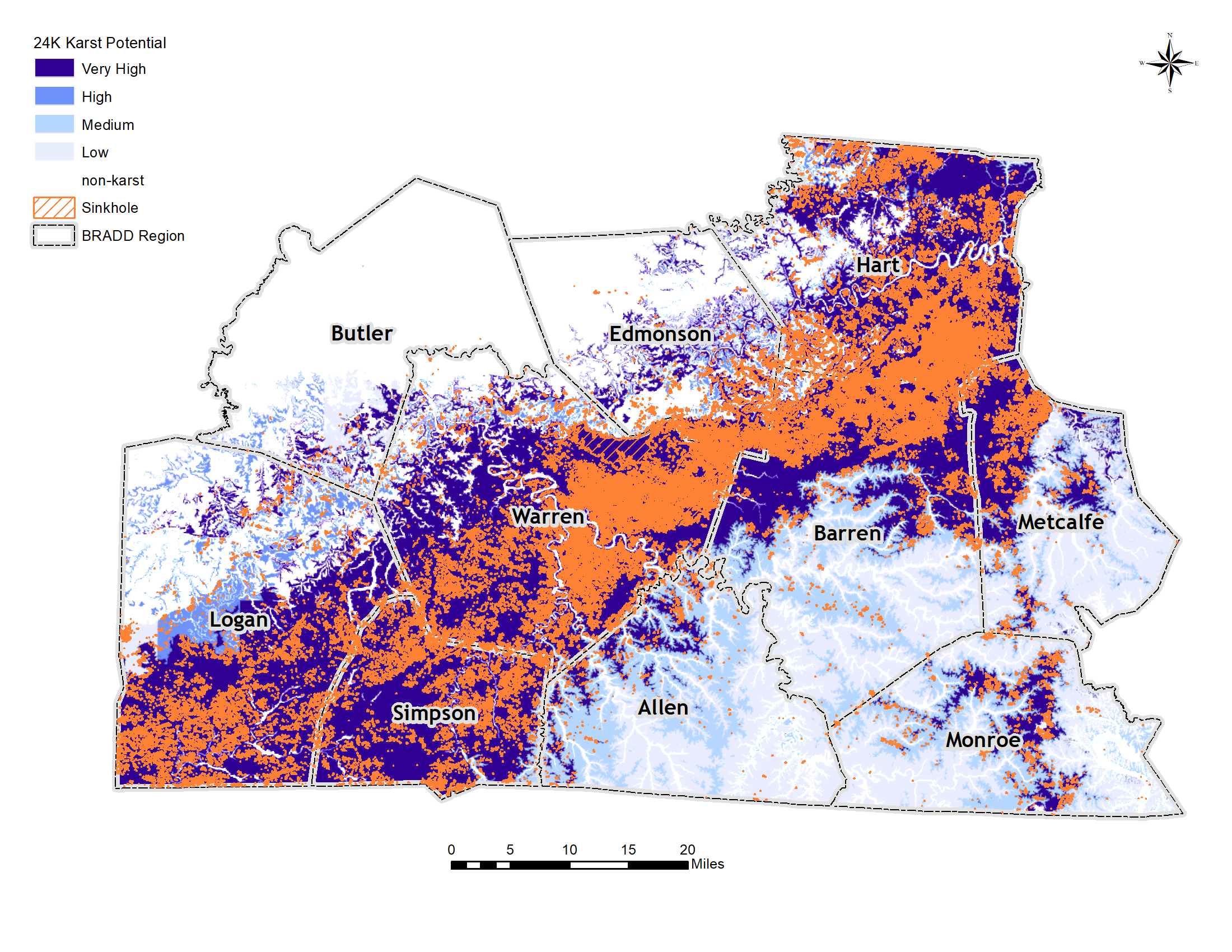Karst / Sinkhole

Karst refers to a type of topography formed in limestone, dolomite, or gypsum by dissolution of these rocks by rain and underground water, and is characterized by closed depressions or sinkholes, and underground drainage. During the formation of karst terrain, water percolating underground enlarges subsurface flow paths by dissolving the rock. As some subsurface flow paths are enlarged over time, water movement in the aquifer changes character from one where ground water flow was initially through small, scattered openings in the rock to one where most flow is concentrated in a few well developed conduits. As the flow paths continue to enlarge, caves may be formed and the ground water table may drop below the level of surface streams. Surface streams may then begin to lose water to the subsurface. As more of the surface water is diverted underground, surface streams and stream valleys become a less conspicuous feature of the land surface, and are replaced by closed basins. Funnels or circular depressions called sinkholes often develop at some places in the low points of these closed basins.
Types of Sinkholes
Solution Sinkholes are formed by the weathering by dissolution of exposed soluble bedrock (limestone, dolomite, marble, and rock salt) at the land surface. Surface water collects in the natural depressions and slowly dissolves a sinkhole.
Collapse Sinkholes form when the surface materials suddenly sink into a subsurface cavity or cave. Cavities form slowly over time as groundwater moves along fractures in soluble bedrock which enlarges them through dissolution. Collapses may occur when the cavity gets sufficiently large and the “roof” becomes too thin to support the weight of any overlying rock or sediment causing the cavity to collapse; or if groundwater levels are lowered causing the overlying sediment to first erode and then collapse into the dewatered cavity.
Subsidence Sinkholes – Similar to solution sinkholes, except the soluble bedrock is covered by a thin layer of soil and/or sediment. Surface water infiltration dissolves cavities where the bedrock is most
intensely fractured resulting in the overlying sediment to gradually move downward into the expanding cavity. Sinkhole collapse is the hazard most commonly associated with karst. This hazard occurs in the soil that lies on
top of soluble bedrock.
Why Do Sinkholes Collapse?
The Kentucky Geological Survey (KGS) identifies two ways in which sinkholes collapse:
- The roof of a cave becomes too thin to support the weight of the material above it and collapses.
- Limestone bedrock develops a fracture that is enlarged by water dissolving the limestone. As the limestone erodes, the soil above it slowly falls into the developing sinkhole. This type of cover-collapse is typically very slow and occurs over a long period of time. Only in rare instances will limestone bedrock dissolution cause a rapid collapse.
